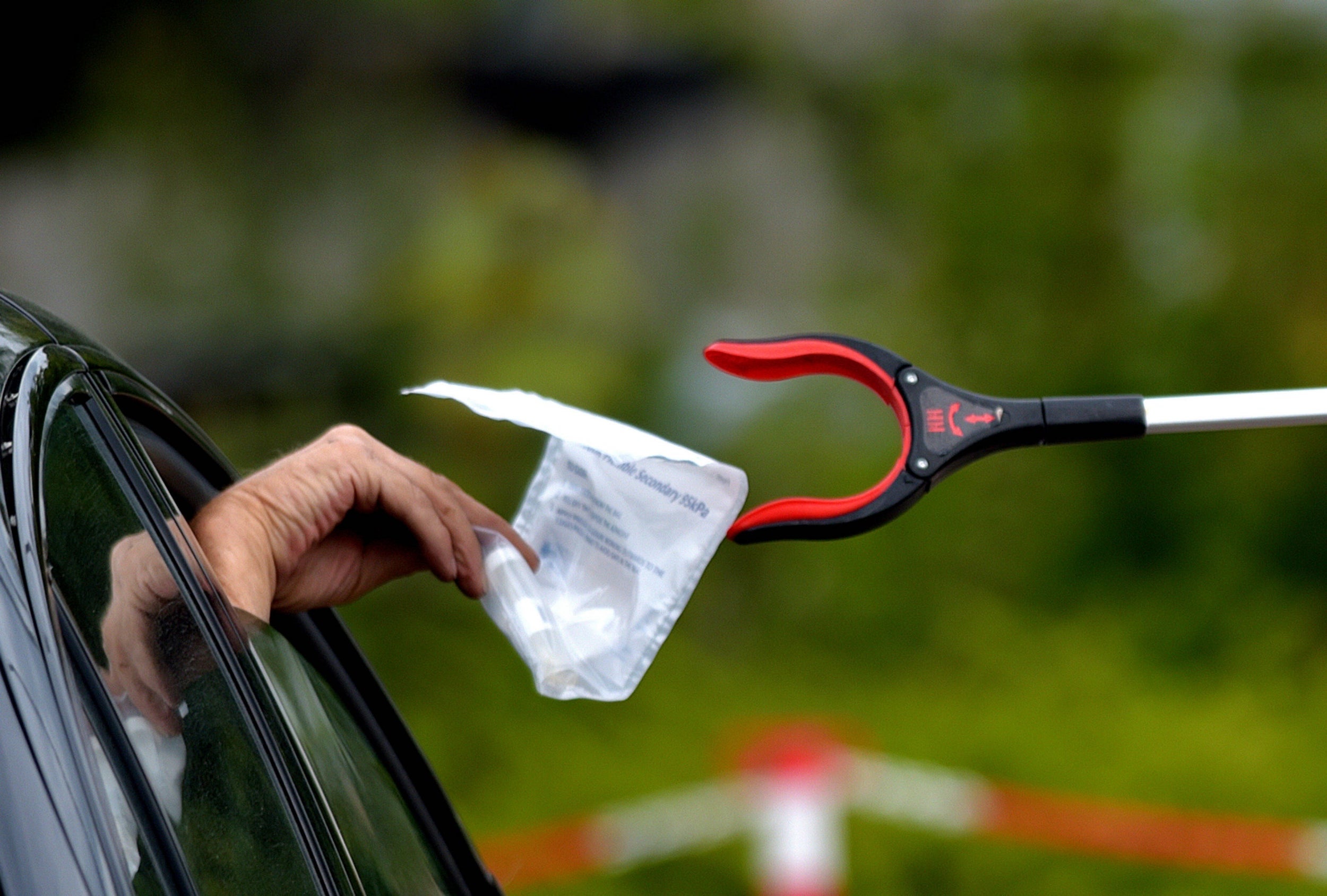
New figures from the Department of Health suggest a sharp fall in observation of social distancing rules in the first full week of relaxed lockdown restrictions earlier this month.
And there were warnings of a “gaping hole” in the system, intended to prevent the spread of Covid-19 as lockdown eases, after it was found that, for a second week running, NHS Test and Trace failed to contact more than a quarter of people who were referred to the programme after testing positive for the coronavirus.
And separate figures from the Office for National Statistics showed that the 4,366 people referred to the scheme represented only a fraction of the 33,000 believed to have been infected at the time in England.
Download the new Independent Premium app
Sharing the full story, not just the headlines
Figures for the Test and Tracescheme’s second week of operation showed that the number of people infected with the virus who provided details of their contacts fell to 4,366 from 5,407 in the previous week, but each of them identified almost twice as many people with whom they had spent time outside their home.
The number of close contacts outside their own households reported by people testing positive for the coronavirus in the week 4-10 June leapt from an average of 5.9 to 10.3.
As a result the total number of individuals asked to self-isolate for 14 days after being identified as having been in close contact with infected people rose from 26,985 to 40,690 over the same period.
Some 4,205 of contacts identified could not be reached by Test and Trace workers, and were therefore not told to self-isolate. The Department of Health said “some” contacts refused to self-isolate, despite having been in close contact with somebody who had tested positive for Covid-19. No figure was immediately available for the number of those refusing to self-isolate.
The week included the first major easing of lockdown restrictions on 1 June, as some primary school years returned to the classrooms, outdoor markets and car showrooms opened and groups of up to six people were permitted to gather in open spaces like parks.
New ONS figures suggested that between 31 May and 13 June, around 33,000 people in England had Covid-19 at any one time – the equivalent of one out of every 1,700. The total was well down on the estimated average of 149,000 in early May.
But modelling of the trend over time showed evidence that the rate of decrease in infections since the study began on 26 April may have slowed in recent weeks.
The latest news on Brexit, politics and beyond direct to your inbox
Some 5.4% of those providing blood samples for the survey tested positive for Covid-19 antibodies, which equates to around 1 in 19 people in the country having had the disease at some point.
Individuals testing positive for coronavirus are contacted by NHS Test and Trace asked to provide details of any places they have been to recently, including workplaces or schools, as well as the names of any people they were in close contact with in the 48 hours before symptoms started. These people are contacted and told to self-isolate for 14 days, without any test for Covid-19 being required.
The Department of Health said that 5,949 people testing positive for Covid between 4-10 June were referred to the tracing scheme, of whom 4,366 were contacted and provided details of their movements – 73.4 per cent of the total, up from 72 per cent the previous week. Some 78 per cent of those contacted were reached within 24 hours, but in 7 per cent of cases it took more than 72 hours.
However, this is likely to represent only a relatively small proportion of the actual number of people infected with the disease in the UK during that week, which is thought to run well into five figures.
And Labour said it was “hugely worrying” that more than a quarter of coronavirus patients referred to the operation were not contacted at all.
“Expert opinion shows that to defeat this virus we need a fully functioning test and trace system, so these latest figures are hugely worrying,” said Labour health spokesperson Justin Madders.
“Having a quarter of those who test positive not contacted is a gaping hole in the system that urgently needs to be addressed.”
Some 44,895 contacts were identified, with the army of 25,000 contact tracers managing to get in touch with 90.6 per cent of them, compared to 90.5 per cent the previous week.
The executive chair of NHS Test and Trace, Dido Harding, said: “NHS Test and Trace is working to stop the spread of coronavirus and undoubtedly helping to save lives. Building on our previous work, this week’s data shows that tens of thousands more people who may have otherwise unwittingly spread the virus are now remaining safely at home.
“Our efforts continue to reach more people who may be at risk of passing the virus on, and I am grateful for the support the public has already shown to protect those around them.
“We continue to rely on everyone to play their part and we urge those with symptoms to book a test immediately, and those contacted by the NHS Test and Trace service to follow the advice they receive.”


